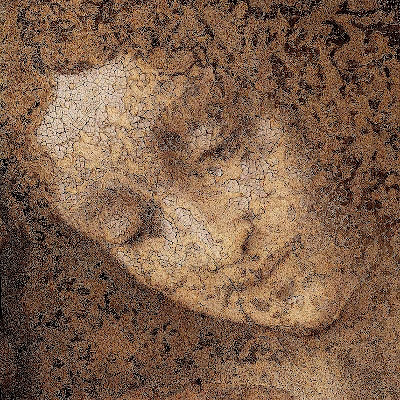
A careful look at this detail (below) reveals a subtle difference. The woman standing in the room with her back to us is looking down towards her right hand where it apparently touches the instrument's keyboard. But her reflection shows her rather glancing towards her companion to her right. The mirror's rebellious reflection does not, after all, faithfully obey its counterpart in the room before it. Why should this be? Infrared analysis of the painting reveals that the artist originally had the woman looking more to the right, as the mirror records. But for whatever reason, Vermeer slightly altered the angle of her head to the position as we see it, while leaving her reflected image unaltered. The mirror therefore records her original stance - as well as a tantalising glimpse of the leg of the artist's own easel beyond the table, and so establishing Vermeer's ghostly presence in his own canvas.

A century further on in time. Jan Ekels the Younger presents us with another Dutch interior, and another mirror. In 'A Young Writer Trimming His Quill' (below), the artist shows us a scene which appears to owe much to Vermeer's influence in its atmospheric lightfall from the window and it's interior calm. On the wall hang a gaming board with its companion bag of pieces, and another black-framed mirror. Unlike Vermeer's mirror, this mirror does indeed appear accurately to reflect its subject, and it is thanks to this device that we are shown the young writer's features.

But this second mirror reveals a deceit perhaps more disturbing than Vermeer's mirror. For the angle of the mirror - and cold logic - tells us that the artist's own reflection must have been visible behind the writer. And yet the space is blank, reflecting only a similar wall to the one on which it hangs. The artist has chosen to make his presence a mysterious invisibility (detail below).

We can reasonably deduce that Ekels simply decided that to include his own image in the scene would have been too intrusive to his painting's solitary calm. That the mirror allows us to see his subject's face is purpose enough for its inclusion. But this aesthetic decision meant being disobedient to the mirror's rule. Ekels' mirror is, it turns out, no more faithful to reality than Vermeer's.
But such is the force of mirrors that on a more unsettling level we might feel that more has been erased by Ekel's denying mirror. Everyday experience insists that, as we stare into Ekels' mirror we fail to see, not only the artist, but ourselves.

Artist: Johan Vermeer
Work: A Lady Standing at the Virginals with a Gentleman, 1660
Medium: Oils on canvas
Location: The Queen's Collection, Buckingham Palace, London
Artist: Jan Ekels the Younger
Work: A Young Writer Trimming His Quill, 1784
Medium: Oils on canvas
Location: Rijksmuseum, Amsterdam
Sources:
'Een Eeuw Apart: Het Rijksmuseum en de Nederlandse Schilderkunst in de 19de Eeuw'
by Wiepke Loos, et al. Rijksmuseum-Stichting, Amsterdam, 1993.
'Vermeer and the Art of Painting'
by Arthur K. Wheelock, Jr. Yale University Press, 1995.















































